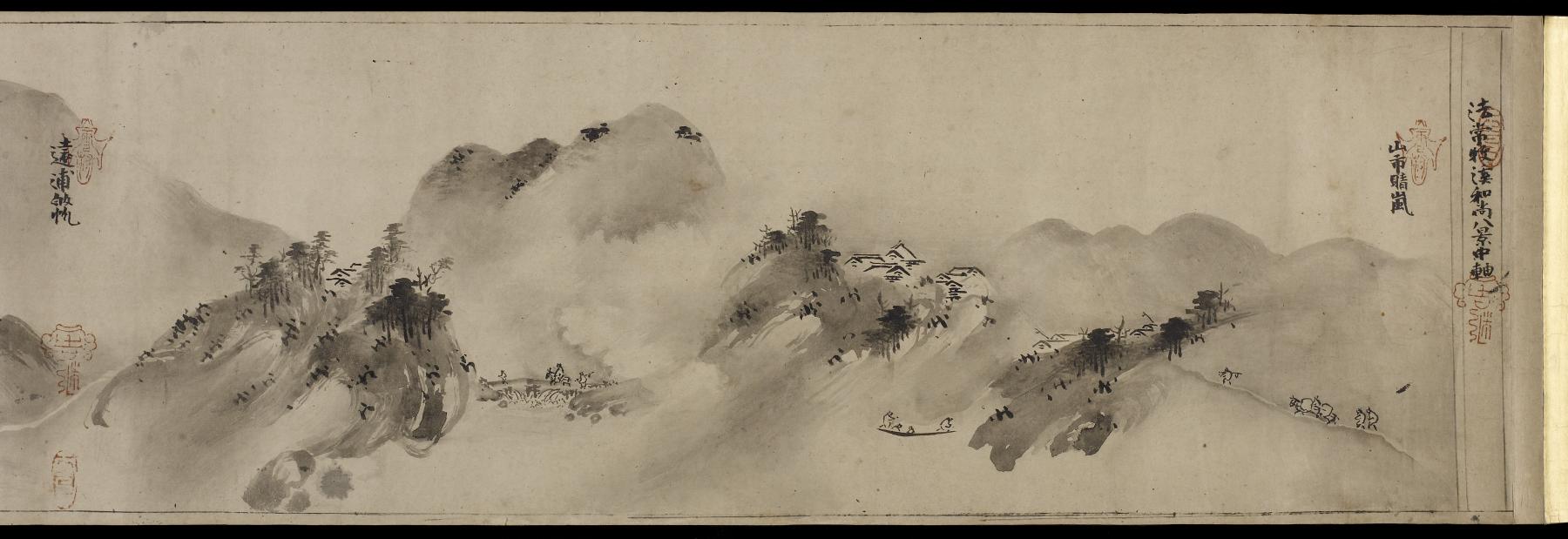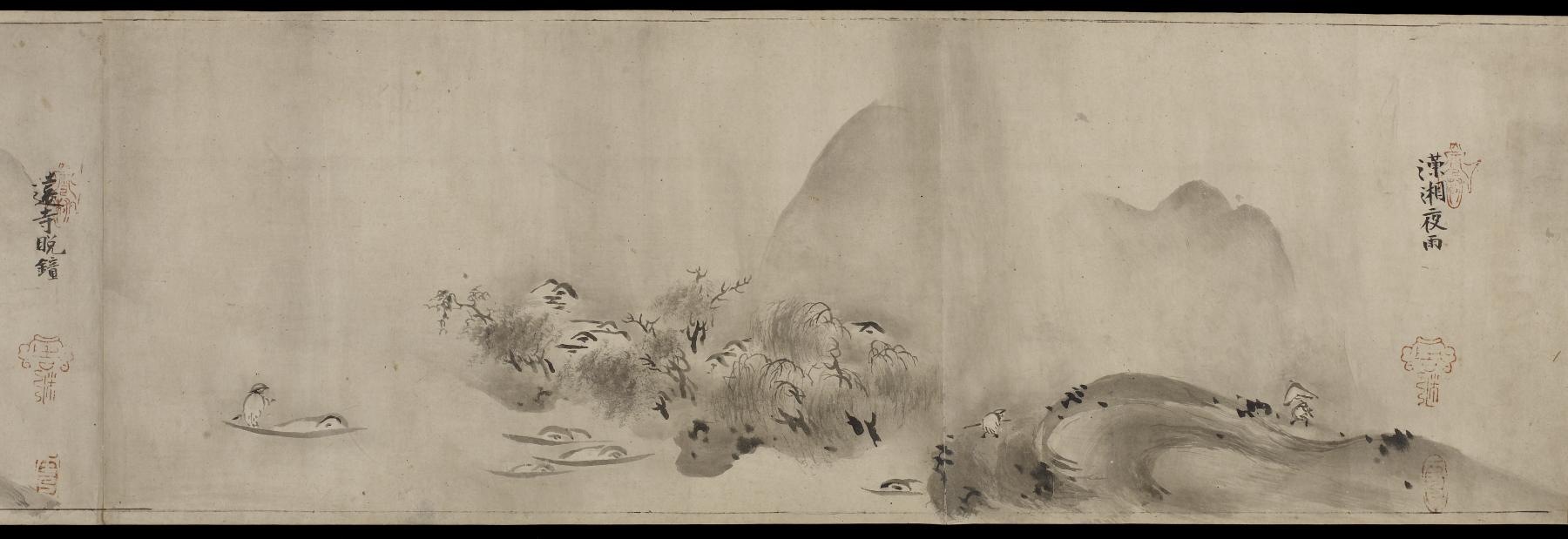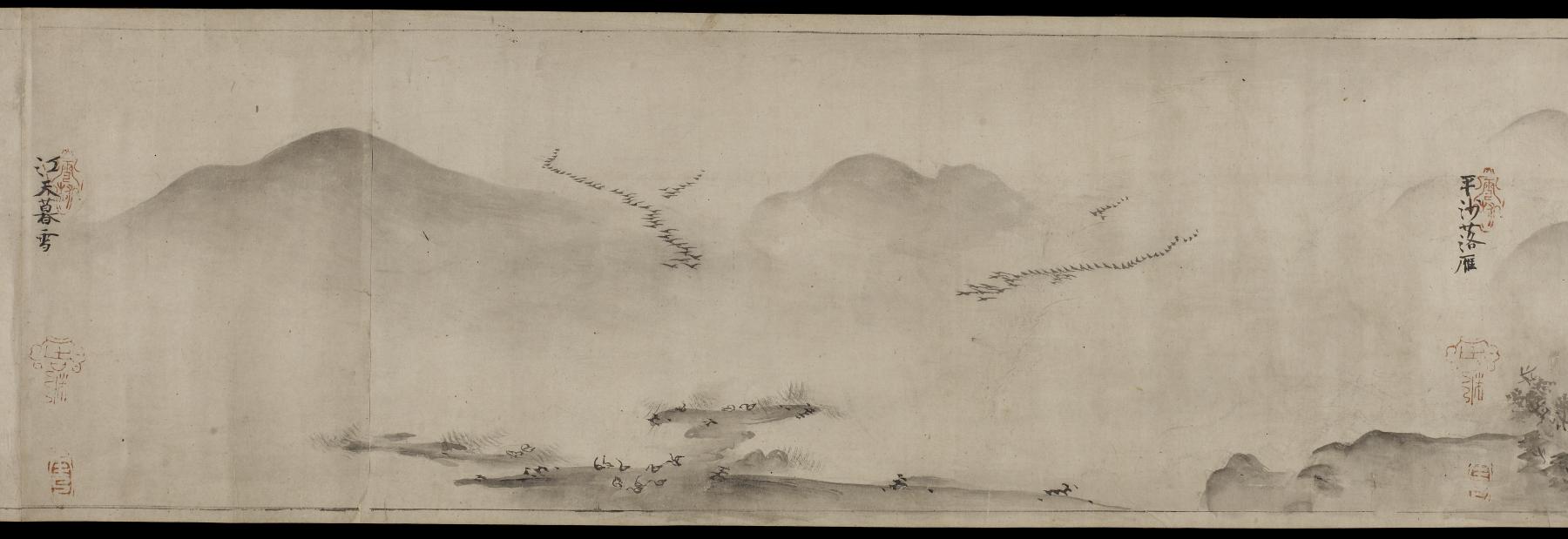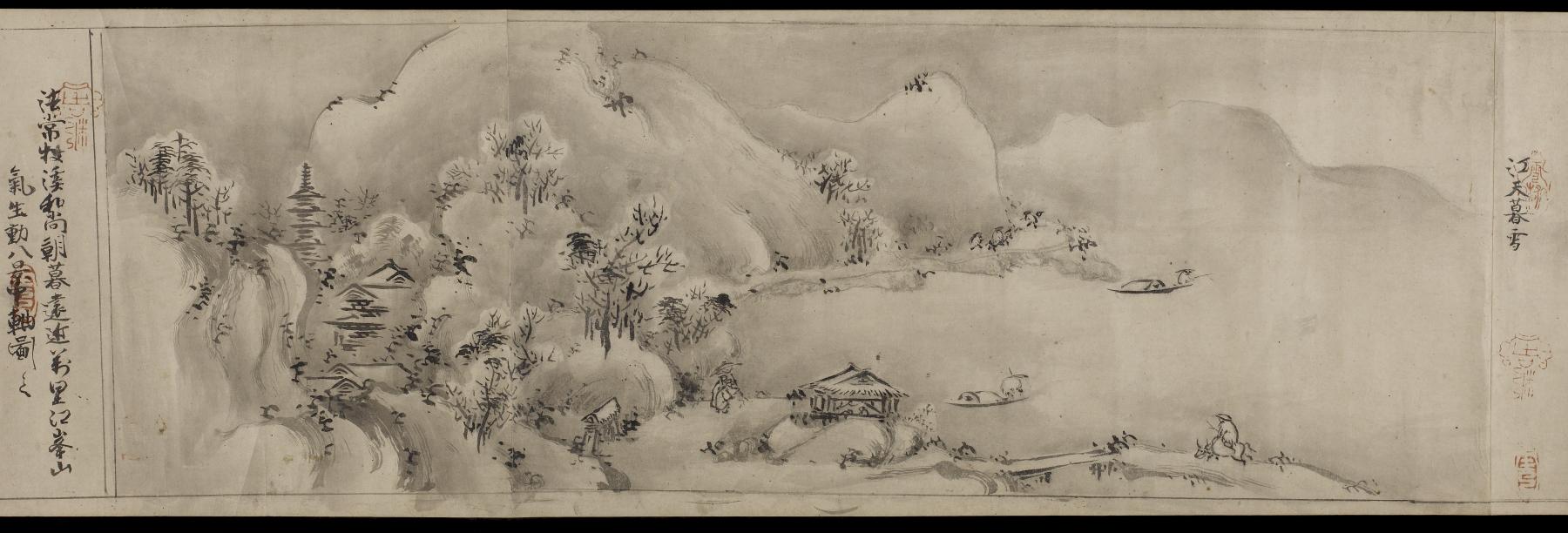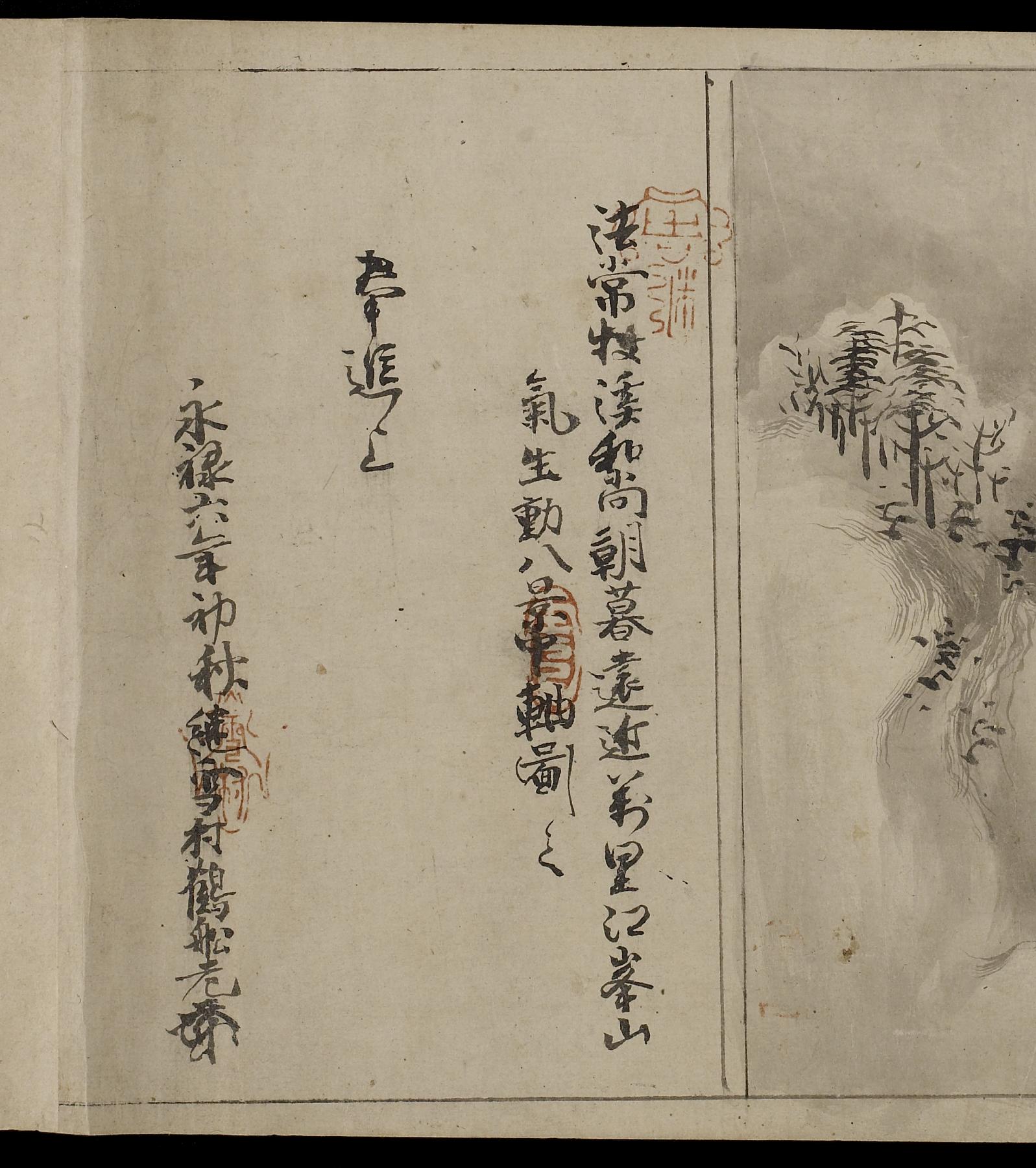Eight Views of the Xiao and Xiang Rivers
(Japan and Korea )
This work is by the last great Muromachi Period (1392–1573) ink painter, Sesson Shukei. Sesson was a Zen monk of the Soto sect who excelled at the Chinese-inspired ink painting style made famous by his predecessors Shubun and Sesshu. Born Satake Heizo in Hitachi, he crafted his artist's name from the characters of these two earlier artists' names in an effort to situate himself as the next painter in their lineage. Sesson's works stand as iconic presentations of the Chinese style as imagined by the Japanese artists of the 16th century. He served as the figure whose works most directly transmitted the styles of the 15th century through the 16th century and passed it on to the later ink painters of the 17th-century Edo period. This pivotal role is today represented by fewer than twenty surviving works.
The subject of this handscroll is firmly rooted in Chinese tradition. The 11th century Song Dynasty Chinese government official Song Di created a series of eight poetic reminiscences recalling the rural beauties of an imagined China. In Japan this subject is known as Shosho hakkei. It inspired many popular sets of eight views of Japanese locations both real and imagined.
Sesson depicted the eight scenes in the following order: 1. Mountain Market: Clearing Mist (????) 2. From the Far Shore: Sailboat(s) Returning Home (????) 3. Dongting Lake: The Autumn Moon (????) 4. Xiao Xiang: Night Rain (????) 5. Misty Temple: Evening Bell (????) 6. Fishing Village: Evening Glow (????) 7. Level Sand: Wild Geese Descend (????) 8. River and Sky: Sunset Snow (????)
Each scene depicts a fanciful riverside with small figures engaged in fishing, traveling, and walking across the countryside. Sesson chose to paint these scenes in an abbreviated form that relies heavily on the calligraphic brushstroke to convey the essential elements of each view.
Provenance
Provenance (from the French provenir, 'to come from/forth') is the chronology of the ownership, custody, or location of a historical object.
Taisho Period Auction, Kyoto, Japan, 1920; purchased by Sano Family, Tokyo Japan, 1920; purchased by Mizutani Shoichiro, Kyoto, Japan, 2011; purchased by James Freeman, Bangkok, 2012; purchased by Walters Art Museum, 2013.
Geographies
Japan (Place of Origin)
Measurements
Image H: 12 3/16 x L: 275 11/16 in. (31 x 700.3 cm); H with wrapper: 12 3/16 x L: 314 1/8 in. (31 x 797.8 cm); H without wrapper:12 3/16 x L 293 1/4 in. (31 x 744.8 cm); Storage H: 4 3/4 × W: 4 15/16 × D: 15 9/16 in. (12 × 12.5 × 39.5 cm)
Credit Line
Museum purchase by exchange, 2013
Location in Museum
Not on view
Accession Number
In libraries, galleries, museums, and archives, an accession number is a unique identifier assigned to each object in the collection.
In libraries, galleries, museums, and archives, an accession number is a unique identifier assigned to each object in the collection.
35.307

